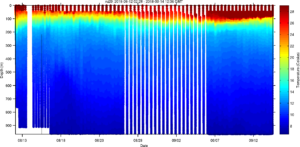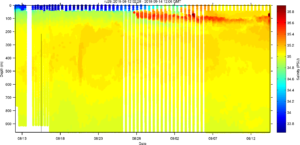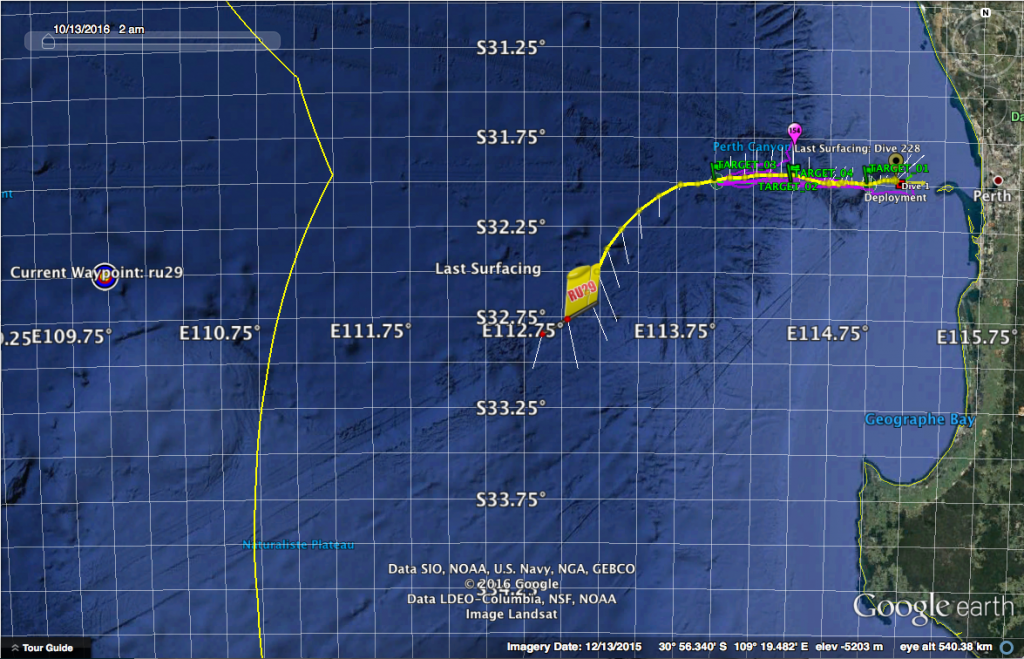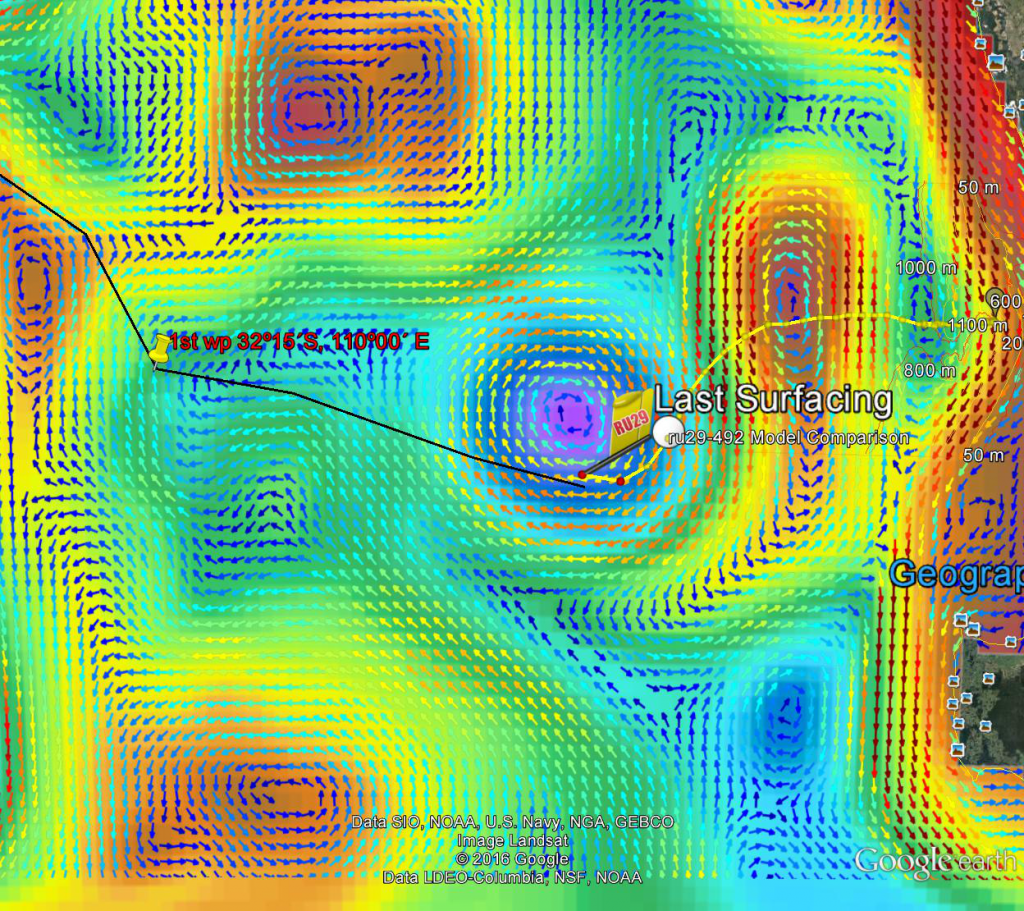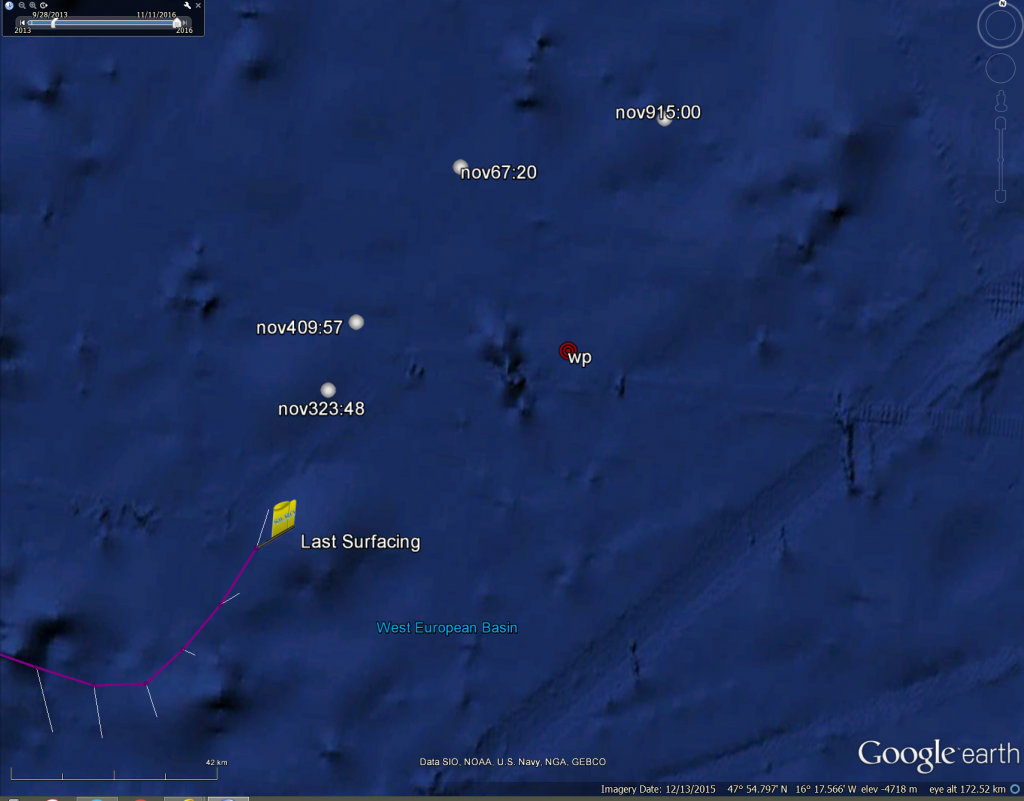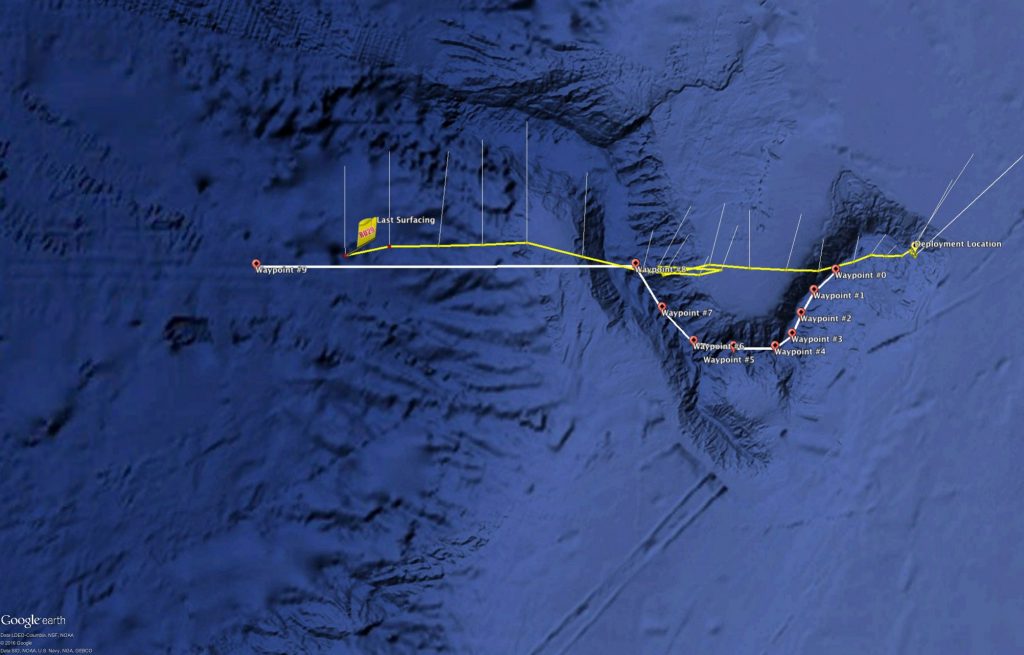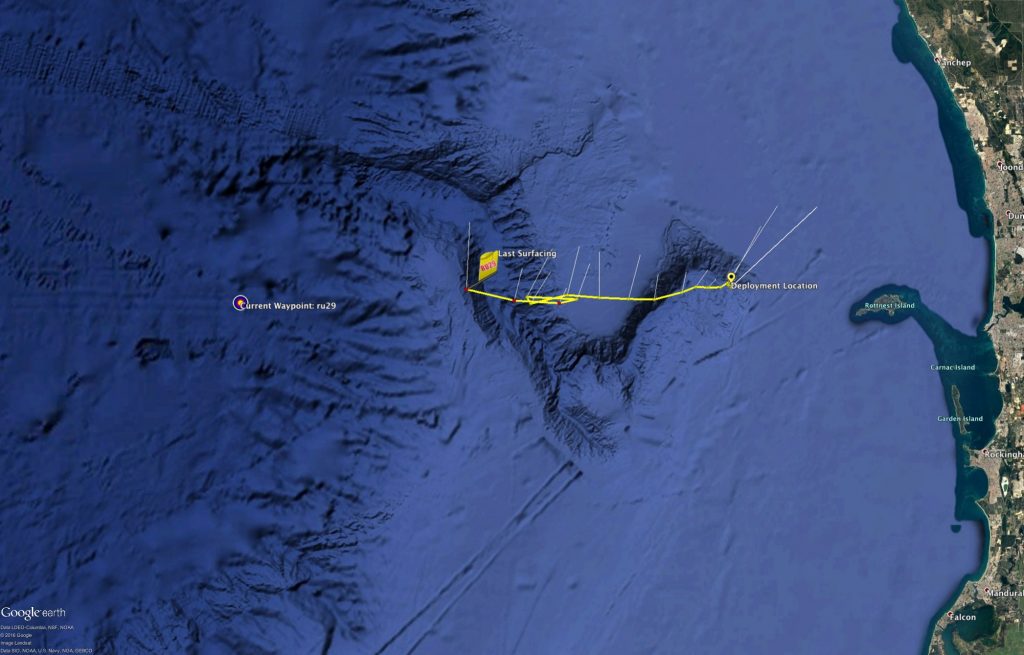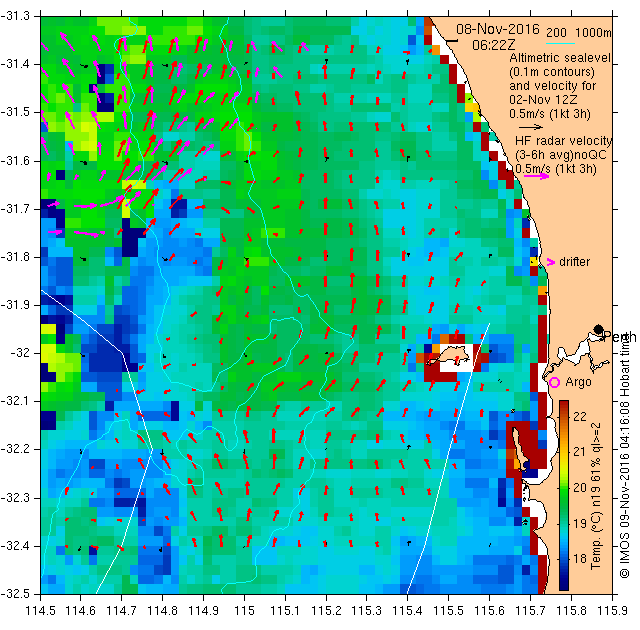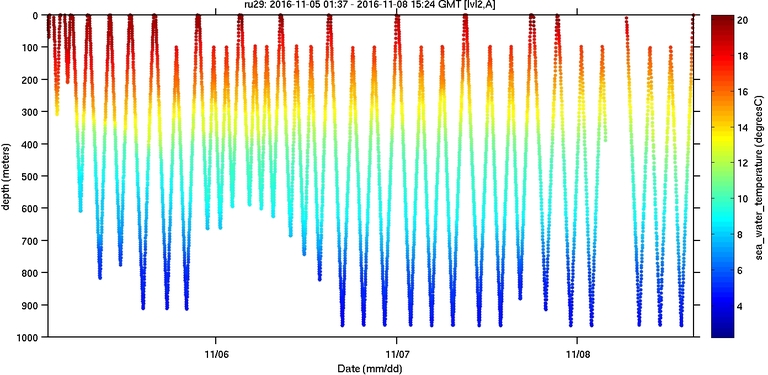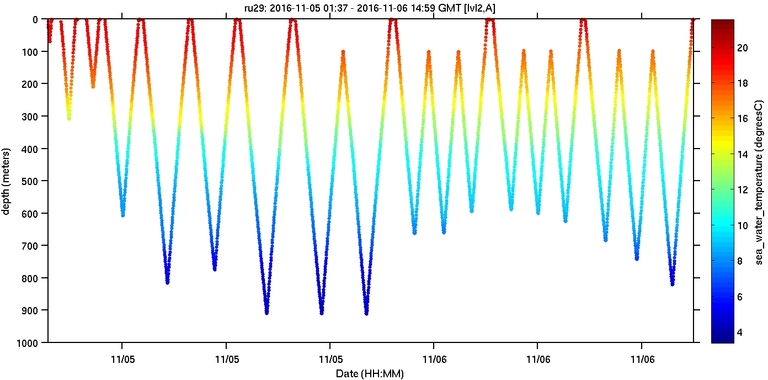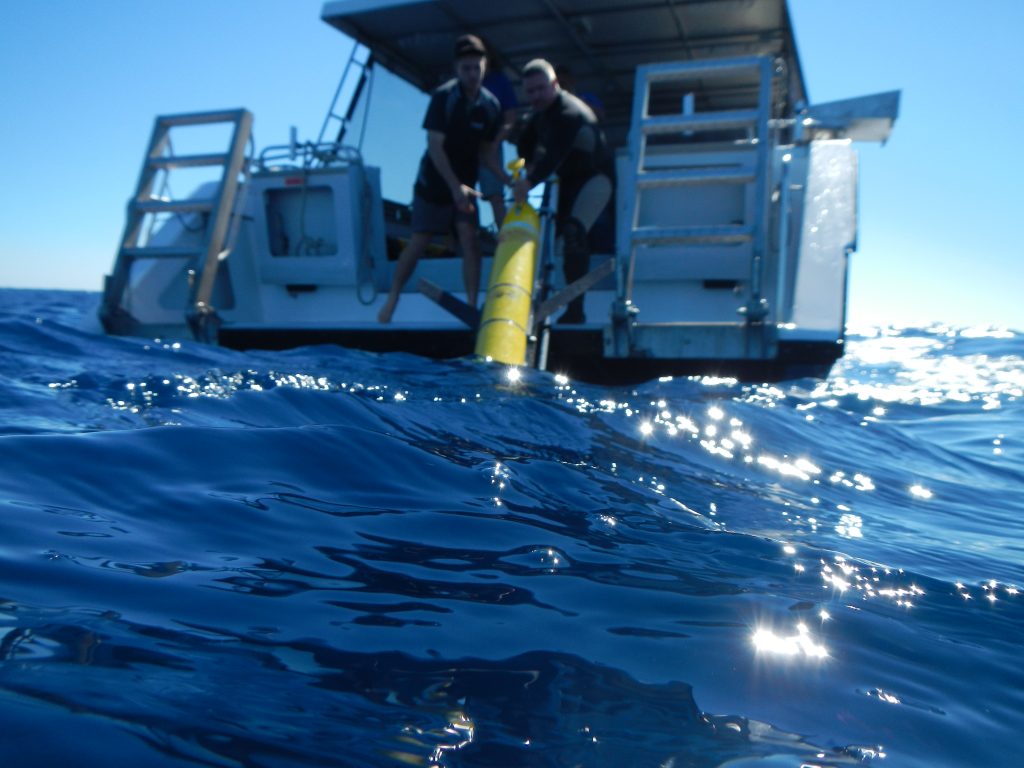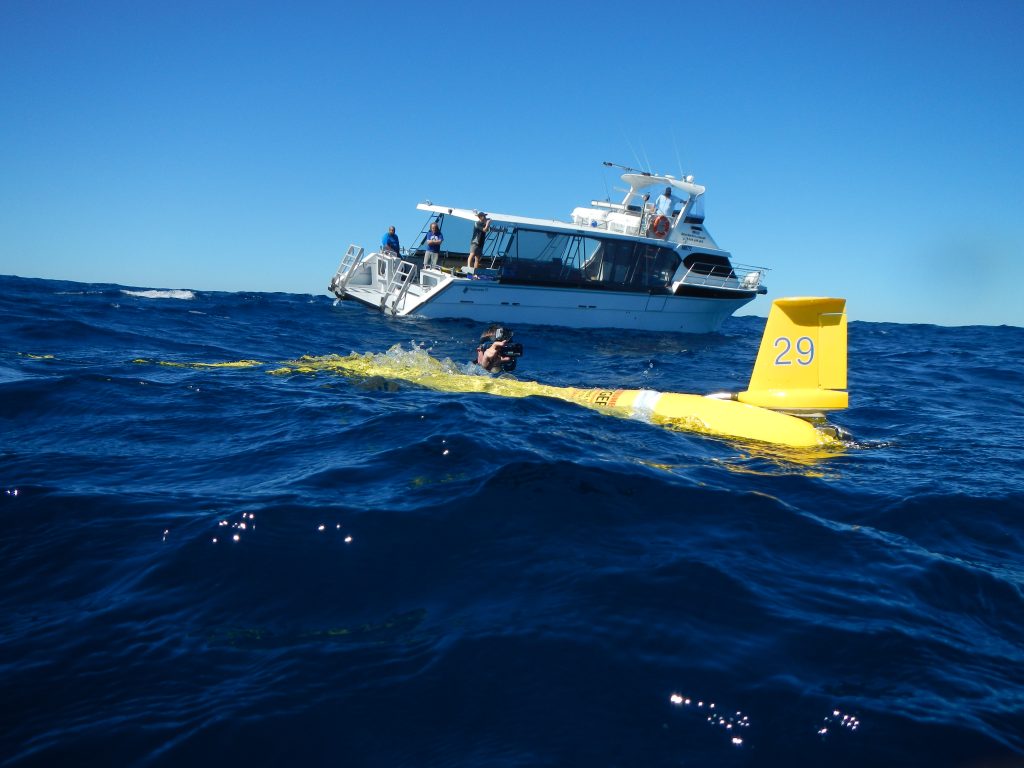Due to a mis calculation in the distance to the way point, this morning 29 turned to back to the East to pursue our emergency way point off of Perth.
 In the image above of the gliders heading, the line in red shows that as the glider was preparing for the last ‘yo’ in its segment, it calculated that the way point was much closer than it actually was, and so since it believed it achieved that way point, began to fly towards the next way point which was left in the direction of Perth as a safety protocol.
In the image above of the gliders heading, the line in red shows that as the glider was preparing for the last ‘yo’ in its segment, it calculated that the way point was much closer than it actually was, and so since it believed it achieved that way point, began to fly towards the next way point which was left in the direction of Perth as a safety protocol.

Our pilots however have since gotten the glider back under control and have sent it back on its way to the west.
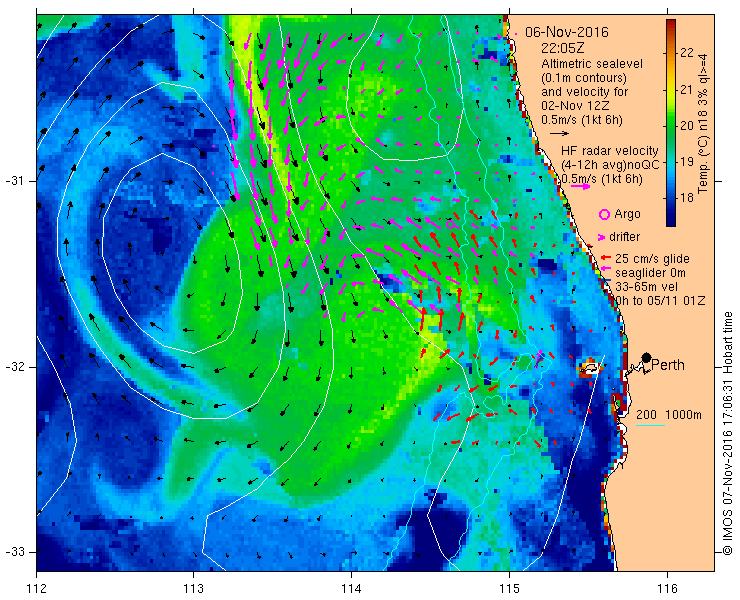
Looking at the currents from IMOS, as we continue down into deeper water we will see the flux to the north, however once we cross the deeper isobath, the current curls around and flows to the south west. Our partners in UWA have told us that their Sea Glider is only about 20 nautical miles ahead of 29 and that we should have no trouble catching up to still pull off the calibration check. Until then we will continue to fly towards the western Way Point.
Force Wind Sea & Honor
